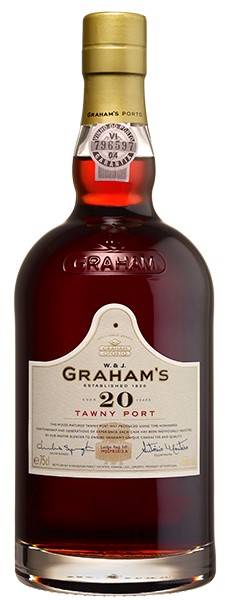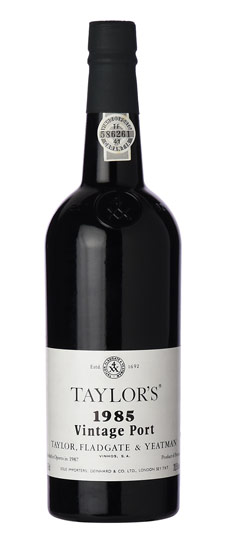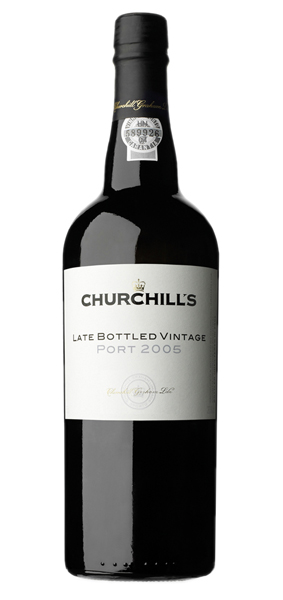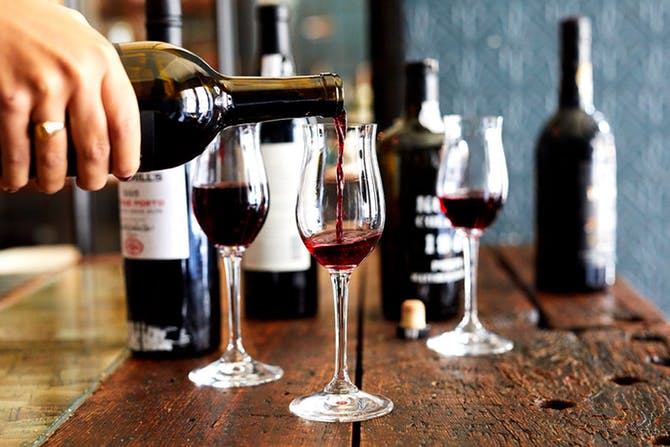PORT
ALL YOU EVER WANTED TO KNOW ABOUT PORT!
Port is a luscious, sweet, powerfully fortified wine. The base for Port is made like any other wine. Grapes are pressed and fermented with yeast, converting the wine’s natural sugars into alcohol. However, before all the sugar has been converted to alcohol, a distilled grape spirit, usually brandy or neutral grain spirit are added to the wine base to stop fermentation. This process is known as fortification. The resulting wine will have an alcohol content ranging from 18-20%.
True port is made in Portugal’s Douro Valley, almost always from a blend of indigenous Portuguese grapes. The five leading grapes include Touriga Nacional (intense color, flavor, and aroma); Touriga Franca (adds floral aromas); Tinta Roriz (body, flavor, and aroma and in Spain it’s known as Tempranillo); Tinta Barroca (adds alcohol, body, and aroma); and Tinta Cão (adds spiciness). The Touriga Nacional grape produces wines with the greatest longevity.
-
Young Tawny Port is basic and uncomplicated. It’s made from grapes that come from the less prestigious
 western end of the Douro. Also, it’s less than three years old when released. They derive their lightness and elegance from having less color extraction due to shorter skin-to-juice contact at fermentation. Young tawny port has a pale, onionskin color. Once opened, it will last two weeks to three months, depending upon storage conditions.
western end of the Douro. Also, it’s less than three years old when released. They derive their lightness and elegance from having less color extraction due to shorter skin-to-juice contact at fermentation. Young tawny port has a pale, onionskin color. Once opened, it will last two weeks to three months, depending upon storage conditions. -
Aged Tawny Port is very sweet and matured in small casks. The wines used for aged tawnies are of the highest quality. They can be aged anywhere from 10 years to 40 years. The age is an average of the numerous lots of varying age that make up the blend. Younger wines contribute vigor and freshness, while older wines add complexity. This extended oak exposure results in flavors ranging from raspberry and
 cinnamon flavors (10 years) to nutty and soft butterscotch flavors (40 years). Also, the color will change from deep tawny (10-year-old) to a golden amber color (40-year-old). The high point of aged tawny is 20-year-old port. It combines the freshness of fruit with nutty complexity from the wood casks. Naturally, the longer aging costs more to produce, which results in a higher price tag to the consumer. A tawny aged for 10 years will cost around $30 a bottle, whereas a port that is aged for 30 years will roughly set you back $110! Once opened, Aged Tawny Port will easily last one to three months, depending upon how it is stored. Serve cool, around 55 to 60 degrees. With a semi-sweet to sweet characteristic, they are a natural pairing with anything nutty, like Pecan Pie or German Chocolate Cake. Aged Tawnies will also go well with smoked cheddar or aged Manchego. A rare special type of aged tawny is called Colheita Port, (colheita means harvest). It’s made from a single harvest and must be aged in wood for a minimum of seven years before bottling. However, many are aged much longer, so a Colheita can vary greatly in style, from a relatively youthful fruit-driven wine to the softest and most venerable of tawnies. Once opened, Colheita will last one to six months.
cinnamon flavors (10 years) to nutty and soft butterscotch flavors (40 years). Also, the color will change from deep tawny (10-year-old) to a golden amber color (40-year-old). The high point of aged tawny is 20-year-old port. It combines the freshness of fruit with nutty complexity from the wood casks. Naturally, the longer aging costs more to produce, which results in a higher price tag to the consumer. A tawny aged for 10 years will cost around $30 a bottle, whereas a port that is aged for 30 years will roughly set you back $110! Once opened, Aged Tawny Port will easily last one to three months, depending upon how it is stored. Serve cool, around 55 to 60 degrees. With a semi-sweet to sweet characteristic, they are a natural pairing with anything nutty, like Pecan Pie or German Chocolate Cake. Aged Tawnies will also go well with smoked cheddar or aged Manchego. A rare special type of aged tawny is called Colheita Port, (colheita means harvest). It’s made from a single harvest and must be aged in wood for a minimum of seven years before bottling. However, many are aged much longer, so a Colheita can vary greatly in style, from a relatively youthful fruit-driven wine to the softest and most venerable of tawnies. Once opened, Colheita will last one to six months. -
Vintage Port can only be made in exceptional years when young wines show near perfect balance. They are usually the richest and most powerful of Ports, and age exceptionally well in the bottle. They are aged in oak barrels for only two years before bottling. Since they are neither fined nor filtered, there will be a great deal of
 sediment as it matures in the bottle and must be decanted upon opening. As Vintage Port ages, it will lose color but gain tones of jammy or dried fruit, spice, and caramel. Generally, Vintage Port requires another ten to thirty years of aging in the bottle before reaching what is considered a proper drinking age. However, with improved viticultural and winemaking practices, young vintage Ports are becoming preferable to a growing number of wine drinkers. They retain a deep red/purple color and sweet, ripe fruit flavors. Vintage Port bottles will have a regular long cork as a closure. Vintage Ports are only made in years of exceptionally high-quality harvests, which on average occur two or three times in a decade. The generally declared vintages (years in which essentially all the Port houses produce a Vintage Port) for the past 20 years and the ratings by Wine Spectator include: 1997 (96 points); 2003 (98 points); 2007 (98 points); 2011 (99 points); 2016 (96 points); and 2017 (98 points). As you can see, it takes an exceptional year to declare the vintage! Serving temperature should be around 60 degrees. Vintage Port will pair beautifully with almost any style of blue cheese or dark chocolate.
sediment as it matures in the bottle and must be decanted upon opening. As Vintage Port ages, it will lose color but gain tones of jammy or dried fruit, spice, and caramel. Generally, Vintage Port requires another ten to thirty years of aging in the bottle before reaching what is considered a proper drinking age. However, with improved viticultural and winemaking practices, young vintage Ports are becoming preferable to a growing number of wine drinkers. They retain a deep red/purple color and sweet, ripe fruit flavors. Vintage Port bottles will have a regular long cork as a closure. Vintage Ports are only made in years of exceptionally high-quality harvests, which on average occur two or three times in a decade. The generally declared vintages (years in which essentially all the Port houses produce a Vintage Port) for the past 20 years and the ratings by Wine Spectator include: 1997 (96 points); 2003 (98 points); 2007 (98 points); 2011 (99 points); 2016 (96 points); and 2017 (98 points). As you can see, it takes an exceptional year to declare the vintage! Serving temperature should be around 60 degrees. Vintage Port will pair beautifully with almost any style of blue cheese or dark chocolate. -
Late-Bottle Vintage (LBV) Ports are produced more frequently
 than Vintage Port, but only from a single harvest of good quality. They are then aged in barrel for four to six years. LBVs are usually filtered before being bottled. If the bottle has a cork in it, it may have sediment and should be decanted. If it’s bottled with a stopper cork that can be extracted by hand, then it will be sediment free. LBVs are ready to drink upon release. Serve slightly chilled. Pairs well with aged parmesan cheese or the likes of anything chocolate, especially something rich like chocolate lava cake! Once opened, LBV will last one week to two months.
than Vintage Port, but only from a single harvest of good quality. They are then aged in barrel for four to six years. LBVs are usually filtered before being bottled. If the bottle has a cork in it, it may have sediment and should be decanted. If it’s bottled with a stopper cork that can be extracted by hand, then it will be sediment free. LBVs are ready to drink upon release. Serve slightly chilled. Pairs well with aged parmesan cheese or the likes of anything chocolate, especially something rich like chocolate lava cake! Once opened, LBV will last one week to two months. -
Ruby Ports are some of the least expensive to purchase. They are ruby red in color and have red fruit aromas of strawberries, plums, and red apples. Fruity and straightforward, they’re a blend of young wines from different years, typically aged for just two or three years in stainless steel or neutral oak before release. They should be served slightly chilled, around 55-65 degrees. Try pairing it with chocolate ganache truffles or blue cheese! Once opened, Ruby Ports will last two weeks to three months.

